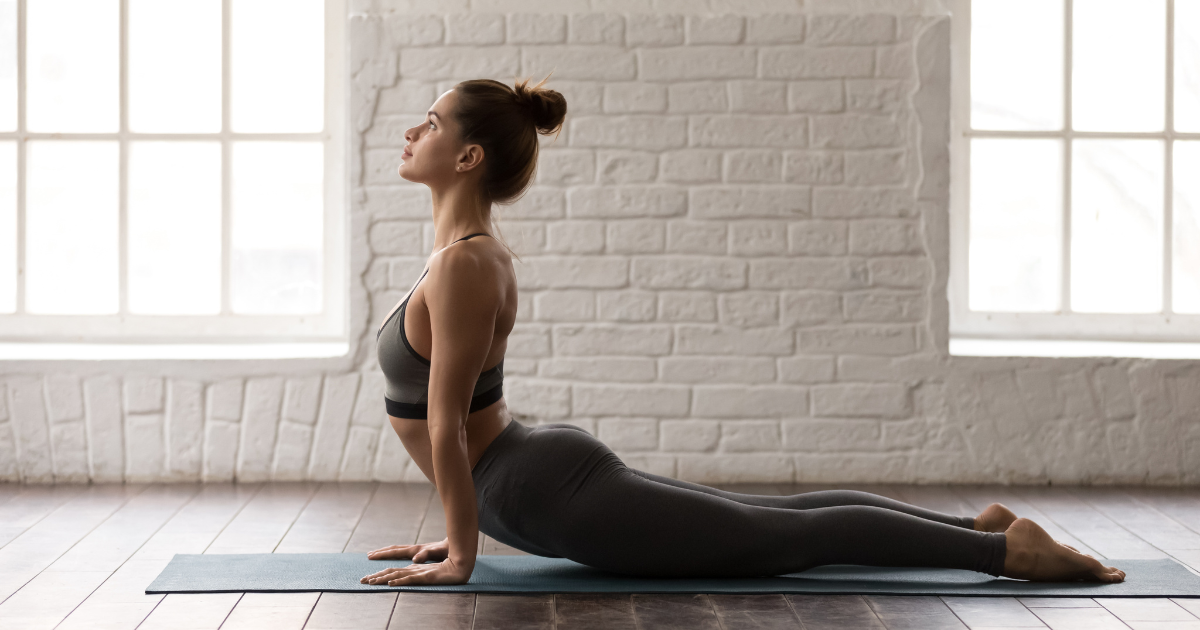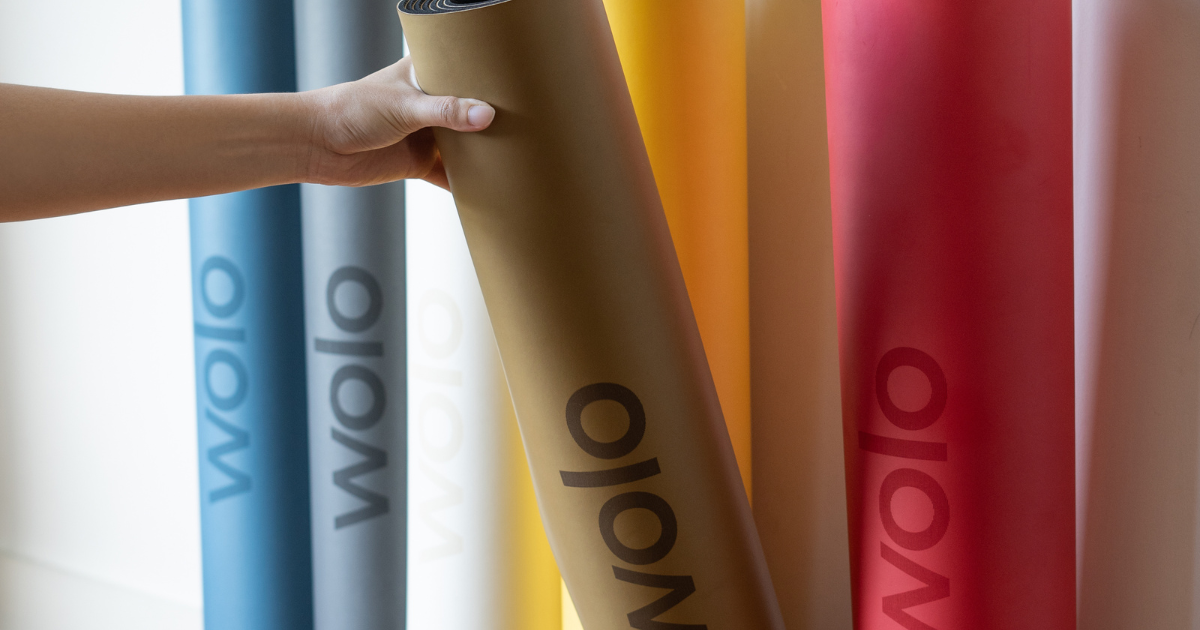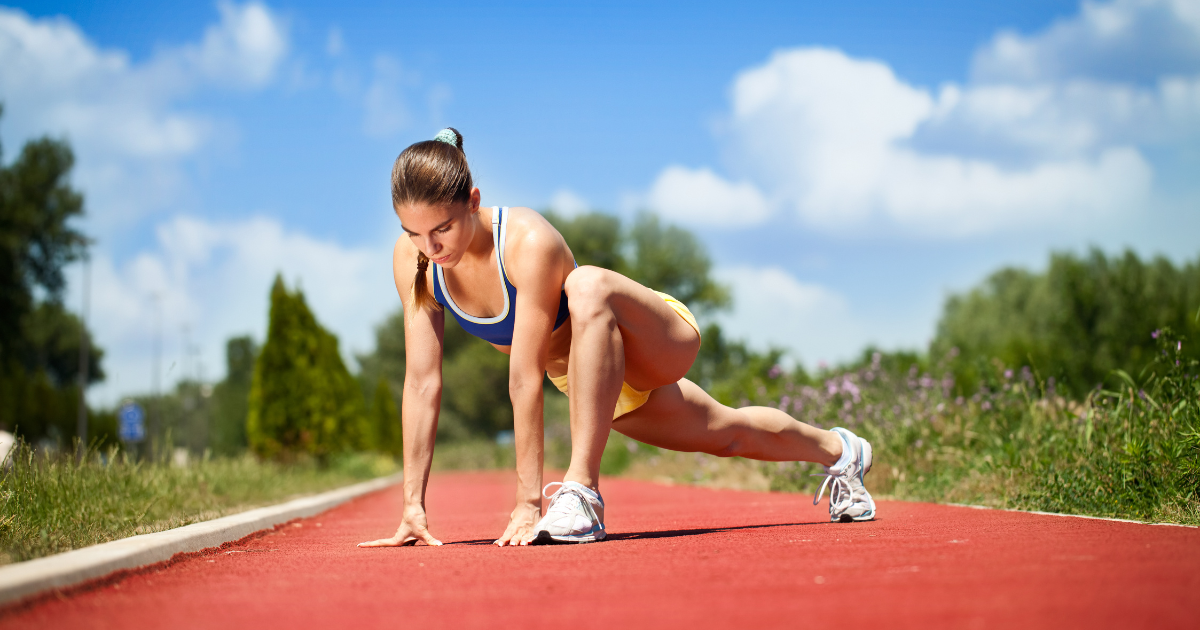The cobra yoga pose, known as Bhujangasana, is a rejuvenating backbend in the Vinyasa yoga tradition. This pose is not just another stretch; it's a gateway to improve health, offering a unique blend of strength, flexibility, and mental focus.
Whether you're a seasoned yogi or a beginner, correctly executing this pose can significantly enhance your practice. In this article, we cover everything you need to know about Cobra Pose—how to do it, its benefits, common mistakes, modifications, and more.
Benefits of Cobra Pose
One key health benefit of practicing Cobra Pose is its ability to fortify the spine. Medically reviewed studies have shown that it improves spinal flexibility and strength, particularly benefiting the spinal extensors.
By gently stretching the spinal muscles, Cobra Pose helps correct postural imbalances and reduce discomfort associated with sedentary lifestyles. Additionally, it stimulates the abdominal organs, aiding in digestion and detoxifying the body.
Engaging regularly in this pose can enhance blood circulation throughout the body, ensuring that your organs receive the necessary nutrients and oxygen for optimal functioning. This improved circulation can lead to a brighter complexion and a more energized feeling overall.
The pose is also known to alleviate symptoms of mild depression by releasing the tension stored in the body and promoting a sense of well-being.
Step-by-step instructions

- Begin by lying face-down on your yoga mat, with your legs extended behind you and the tops of your feet flat on the floor.
- Place your hands under your shoulders, keeping your elbows close to your body.
- Engage your abdominal muscles to support your spine throughout the pose.
- On an inhale, gently lift your chest off the floor, straightening your arms as much as comfortable.
- Keep your shoulders away from your ears and your gaze forward, ensuring your back bend is distributed evenly along the length of your spine.
- Your belly button should remain in contact with the floor, emphasizing the bend in your upper back.
- Hold the pose for a few breaths, taking care to maintain a smooth, even breathing pattern. Keep your legs and buttocks engaged throughout the pose to support your lower back.
- To exit the pose, exhale and slowly lower your chest back to the floor.
- Here’s a bonus: Transition into Child’s Pose to gently stretch your back and relax your body.
Common mistakes
One major mistake of practicing Cobra Pose is overextending the neck, which puts undue pressure on the cervical spine. Instead, keep your gaze forward and your neck long, aligning it with the rest of your spine.
Another frequent error is using only the arm strength to lift into the pose, which can strain the wrists and lead to issues like carpal tunnel syndrome. Focus on using your back muscles to initiate the lift, keeping the elbows bent and close to the body to support a healthy alignment
Ignoring the engagement of the abdominal muscles is also a common oversight. Activating these muscles protects the lower back and enhances the pose's stability. Ensure your abdominal muscles remain engaged and your pelage button is drawn towards your spine throughout the pose.
Lastly, avoid pressing too hard into the hands or locking the elbows. This can cause the shoulders to scrunch up towards the ears, creating tension in the neck and shoulders. Keep a slight bend in the elbows and draw your shoulder blades down your back for a safer and more effective cobra pose.
What and how to prepare
Preparing for Cobra Pose begins with a proper warm-up. Engaging in a sun salutation sequence before attempting the Cobra Pose can help warm up the body and prepare your muscles for the backbend. Focusing on exercises that activate the abdominal muscles will also support your spine and enhance the benefits of the pose.
Ensure your practice space is comfortable and your yoga mat is flat on the floor. If you experience discomfort when lying face-down, consider using a blanket under your hips or thighs. A calm, focused mindset and a body warmed up with gentle stretches are key to safely enjoying the benefits of the Cobra Pose.
Modifications and variations
To accommodate different levels of flexibility and strength, here are several modifications and variations of Cobra Pose.
Half Cobra Pose

Half Cobra Pose, or Ardha Bhujangasana, is an excellent starting point for those new to yoga or with limited back flexibility. This variation reduces the strain on the lower back and allows for a more controlled engagement of the back muscles. It's a fantastic way to gradually build strength and flexibility, making it easier to progress to the full cobra pose.
How-to: Begin by lying face-down, then place your forearms flat on the floor with your elbows under your shoulders. Gently lift your chest off the ground, keeping a slight bend in your elbows and abdominal muscles engaged.
Cobra Pose against the wall
Practicing Cobra Pose against the wall offers a unique way to ensure proper alignment and deepen the stretch. This variation helps you understand how to engage the back muscles effectively while keeping the elbows properly aligned. It's particularly helpful for beginners or those working to improve their posture.
How-to: Stand facing away from the wall, with your fingertips touching the wall at waist height. Gently bend your elbows and draw your shoulder blades together, leaning back into the wall to open your chest.
Hands-Free Cobra

In Hands-Free Cobra, the focus shifts entirely to the back muscles, removing the support of the hands to intensify the work in the spinal extensors. This challenging variation encourages deeper engagement of the back muscles and a more pronounced opening of the chest. It's a powerful way to strengthen the upper back and improve spinal flexibility.
How-to: Start lying face-down, lift your chest off the floor without using your hands, keeping a slight bend in your elbows and your gaze forward.
Risks and precautions
While beneficial, Cobra Pose comes with certain risks, especially for individuals with pre-existing back issues. It's crucial to approach this pose with caution, gradually easing into the stretch to avoid overextending the spine. Listening to your body and respecting its limits is key to a safe practice.
Those with conditions such as herniated discs or severe back pain should consult a healthcare provider before attempting Cobra Pose or any yoga backbends. Modifications can be made to accommodate various health concerns, ensuring the practice remains beneficial without causing harm.
Pregnant women, particularly in their second and third trimesters, should avoid Cobra Pose due to the strain it can place on the abdomen. Alternative poses that do not require lying on the belly or excessive back bending are recommended during pregnancy to maintain safety for both mother and child.
Frequently asked questions
What is the Cobra Pose good for?
The Cobra Pose is excellent for opening your chest muscles and strengthening your spine. It involves a slight bend in your back, which helps to stretch your chest and shoulders. This pose also engages your hip flexors, contributing to increased flexibility. Adding the cobra stretch to your yoga flow can enhance your posture and alleviate stiffness, making it a beneficial practice for those who spend a lot of time sitting.
Who should not do the Cobra Pose?
If you have a recent or ongoing back injury, it's best to avoid Cobra Pose to prevent further strain. Pregnant individuals should also steer clear of the Cobra Pose, especially in the later stages of pregnancy, due to the pressure it places on the abdomen. Always consult a healthcare professional or a qualified yoga instructor if you're unsure whether the cobra pose is safe for you.
Is Cobra Pose bad for your back?
When performed correctly, the Cobra Pose can be beneficial for your back. However, if done improperly, it can lead to discomfort or injury. It's crucial to ensure you don't overextend your back or put too much pressure on your lower spine. Starting with a gentler, modified version of the pose can help you build strength and flexibility safely. Listening to your body and practicing under the guidance of an experienced instructor can help prevent any adverse effects on your back.
The bottom line
Integrating the Cobra Pose into your yoga routine can transform your practice by enhancing spinal flexibility and strength. When you come into Cobra Pose, you're not just performing a gentle backbend; you're engaging in a deeper spinal extension.
Whether you're a beginner or an experienced yoga practitioner, incorporating the cobra pose into your practice can lead to a stronger, more flexible spine and a deeper connection to your body's capabilities.





